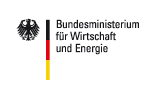
BalanceE
BalanceE final report (German) (3.6 MB)
Germany’s future power system will largely depend on variable renewable energy sources (vRES) - mainly photovoltaics and wind power. In order to balance demand and supply of electricity from vRES, new options become increasingly important at higher shares of vRES in the power system, due to both technical and cost reasons. Flexible bioenergy and energy storage are two important options, which can ease the system integration of vRES and are likely necessary to reach renewable targets in coming years. These two options may stand in competition but also in synergy with each other, and have different technical, environmental and cost characteristics which need to be taken into account.
In the project BalanceE, a team of scientists from UFZ, DBFZ and Fraunhofer UMSICHT have investigated scenarios for the integration of these options until 2050. The following research questions have been followed:
• Which role can bioenergy and power storage options play in the systems integration of variable renewable energy technologies?
• How do the technical possibilities develop over time and under different regional characteristics? When and where do synergies or competition between technologies develop?
• How do the technological developments fit in the plans of the Energiewende?
• Which frame conditions and political instruments have to be in place in order to support an efficient implementation of the relevant technologies?
For the analysis, the focus was laid on different bioenergy (biomethane-CHP, biogas, and wood-CHP) as well as power storage (short and mid-term) options for balancing the power system. Two model regions were assessed – one wind power dominated based on the 50Hertz control area, and one solar power dominated based on the TransnetBW control area, both in Germany. The areas were normed so that a 50% renewables share was set to 2030, 65% to 2040 and 80% to 2050. Two scenarios of wind and solar power developments were assessed: one according to present plans and scenarios, and one with both plant composition as well as mix between solar and wind power optimized. The latter was done with the model VAREO, developed at the UFZ. In total, thus 12 scenarios were assessed.
The power storage portfolios were set based on the residual load profiles of the power mix, with a weighting algorithm, while the bioenergy was set based on published long term plans and scenarios. The resulting generation capacity and storage mix was dispatch optimized in the model GOMES, developed at Fraunhofer UMSICHT, with the minimization of the greenhouse gas emissions as goal function. Beside the twelve main scenarios, further runs were performed in order to assess the role of and synergies and competition between power storage and bioenergy.
System friendly vRES results in a smoother generation and residual load profile, which reduces the need for balancing options. The effect is especially significant in the wind power dominated region and at high renewables shares, where both the vRES capacity as well as the balancing capacity is substantially lower.
In the solar power dominated region, storing the mid-day peaks is important for reaching high renewables shares, and thus in such regions a combination with power storage is required. In this case, short- and mid-term storage options are important, while in wind power dominated regions as well as for balancing seasonal variations, bioenergy is more relevant. The latter is especially valid if other balancing solutions, such as grid extensions, demand side management, long-term power storage and sectoral coupling are not available.
The results obtained can be used in the design of system-friendly generation plants and tailored flexibility options. An orientation for this is already given by the results available here. On the other hand, supplementary scientific research should help to further differentiate and clarify the statements made.
Status:

Project duration:
Feb 2015 - Feb 2017
